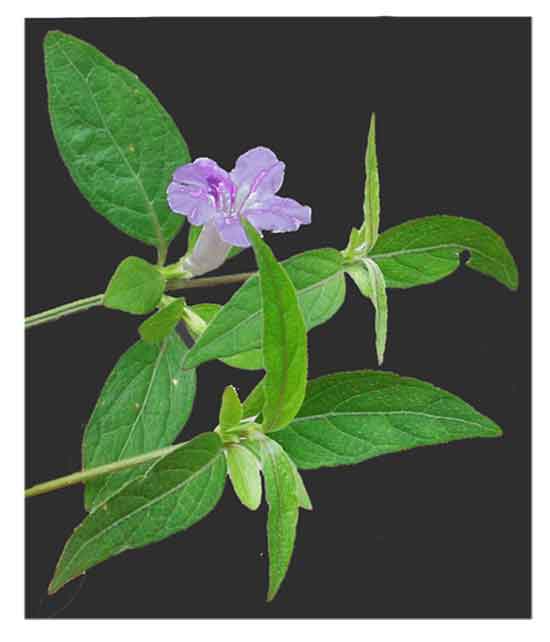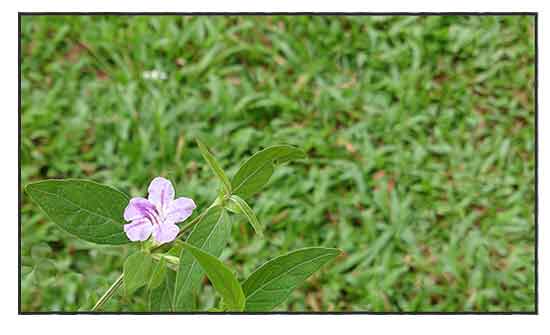
Family • Acanthaceae
Creeping ruellia
Ruellia repens L.
xxxxxxx xxxx
Nan cao
| Scientific names | Common names |
| Dipteracanthus cernuus (Roxb.) Santapau | Creeping ruellia (Engl.) |
| Dipteracanthus lanceolatus Nees | Creeping wild petunia (Engl.) |
| Dipteracanthus repens Hassk. | |
| Ruellia cernua Roxb. | |
| Ruellia hirtella J.B.Imalay | |
| Ruellia repens L. | |
| Ruellia repens is an accepted species. KEW: Plants of the World Online | |
| Other vernacular names |
| CHINA: Nan cao. |
| INDONESIA: Plinten, Remah, Sekatan. |
| MALAYSIA: Akar keramak, Deras malam, Rumput halyor, Seranam. |
| THAILAND: Chaa hom, Daa maeng. |
| VIETNAM: Kim ngam, Day nhan dong. |
Gen info • Growth form: A creeping herb, up to 50 cm tall. Foliage: Opposite, stalked leaves have thin papery leaf blades that are ovate to lance-shaped, 1.4-4 cm long and 0.8-2 cm wide. Flowers: Funnel-shaped flowers are white or pink to light purple in colour,, 1.2-2 cm in diameter. The corolla lobes are ovate in shape, with rounded tips. Fruit: Fruits are capsules that have a slightly hairy exterior, about 1.2 cm long and ripening to brownish yellow. (Flora & Fauna Web) (4)
Constituents Properties Studies Availability |
April 2025
![]()
 |
| Â Â Â Â Â Â Â Â Â Â Â Â Â Â Â Â Â Â Â Â Â Â Â Â Â PHOTOS / ILLUSTRATIONS |
| IMAGE SOURCE: Ruellia repens: Creeping ruellia / Mokkie / CC BY-SA 3.0 / Image modified / Click on image or link to go to source page / Wikimedia Commons |
| OTHER IMAGE SOURCE: Ruellia repens: Creeping ruellia / Mokkie / CC BY-SA 3.0 / Image modified / Click on image or link to go to source page / Wikimedia Commons |
Additional
Sources and Suggested Readings |
• |
DOI: It is not uncommon for links on studies/sources to change. Copying and pasting the information on the search window or using the DOI (if available) will often redirect to the new link page. (Citing and Using a (DOI) Digital Object Identifier) |
| Â Â Â Â Â Â Â Â Â Â Â Â Â Â Â Â Â Â Â Â Â Â Â Â Â Â Â Â Â Â List of Understudied Philippine Medicinal Plants |
| Â Â Â Â Â Â Â Â Â Â Â Â Â Â Â Â Â Â Â Â Â New plant names needed The compilation now numbers over 1,500 medicinal plants. While I believe there are hundreds more that can be added to the collection, they are becoming more difficult to find. If you have a plant to suggest for inclusion, native or introduced, please email the info: scientific name (most helpful), local plant name (if known), any known folkloric medicinal use, and, if possible, a photo. Your help will be greatly appreciated. |
• |
 |



